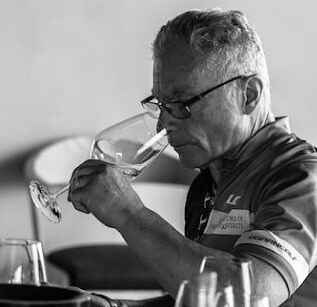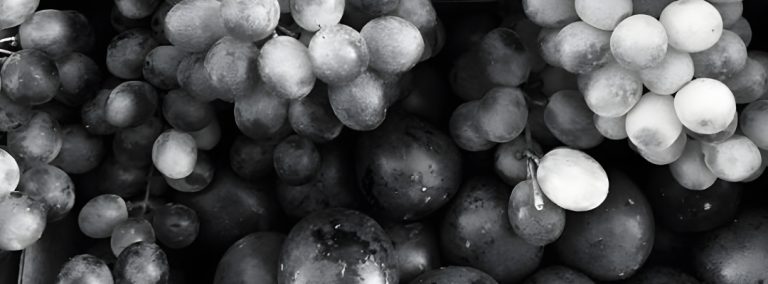California is known for its Cabernet and Napa Valley and Sonoma County are two of the most famous growing areas in California wine country. They’ve been growing Cabernet Sauvignon here since the mid 1800s. But are Napa and Sonoma Cabernets equal? Not exactly.
Napa makes fuller-bodied and more tannic Cabernet than Sonoma because it’s in between two mountain ranges and sees higher average daily temperatures. Napa gets some fog and cooler air off of San Francisco Bay, especially in the south, but not to the extent of Sonoma, which runs along the Pacific Ocean.
You don’t want to grow Cabernet Sauvignon in most of Sonoma County because it’s a much cooler climate where the fog hangs around later. In fact, that’s why Pinot Noir and Chardonnay do so well here!
Nonetheless, there are a few areas in Sonoma County where they make great Cabernets including Alexander Valley, some parts of Dry Creek Valley and the Sonoma Mountain AVA. And while Napa is often spoken of as “the King of Cabernet” some have argued that wines from the tiny Knight’s Valley area in Sonoma can rival and at times even exceed the best wines from Napa.
It’s generally the case that the Sonoma Cabernet vineyards are further inland, and in Alexander Valley they’re also at a higher elevation in the foothills of the mountains. If it’s Cabernet you’re after and you are planning to visit wineries in one area vs the other, take care to map your route accordingly. And remember, you can taste plenty of red wine in the coastal areas of Sonoma too, it’s just more likely to be a Pinot.
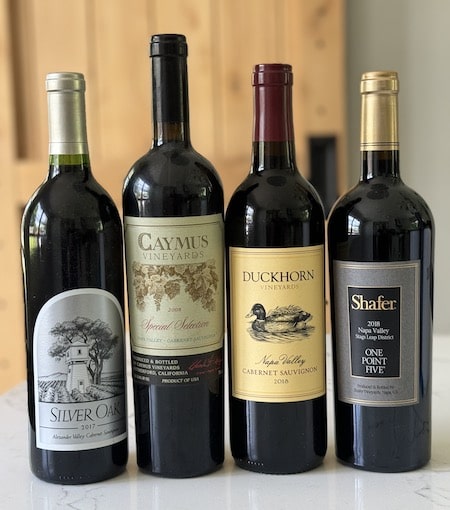
More on the difference between Napa and Sonoma Cabernet
Structure of the wine
Wine from Napa is generally more structured and bigger because Napa gets more heat units than Sonoma. Temperature affects the ripeness of the grapes, the fruitiness of the wine, the density of color and the tannins in the wine. Tannins are what helps red wine age longer. Napa Cabernet is often denser and richer – though the better Sonoma Cabs can definitely hold their own. Keep in mind Napa is quite long and you’ll note a difference between wines that come from the northern and southern parts.
Alcohol content of the wine
An average bottle of Cabernet Sauvignon from Napa will likely be higher in alcohol than one from Sonoma. The alcohol content of a wine is influenced by how ripe the grapes are when they’re harvested. The riper the fruit, the higher the sugars, and the higher the alcohol percentage in the resulting wine.
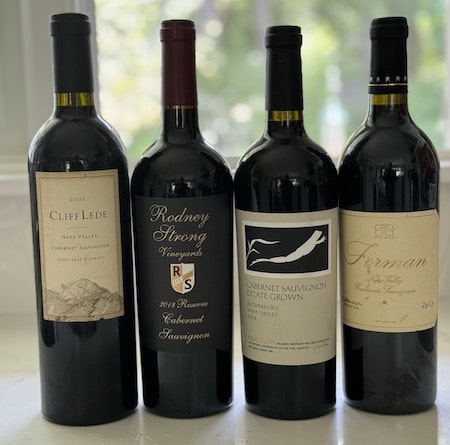
Cost of the wine
There’s a big difference in the average cost of Cabernet Sauvignon grapes from each county. A ton of grapes from Napa is usually about two and a half times the price of a ton from Sonoma.
This cost difference is then passed on to the consumer. For example, Silver Oak is a famous California winery. They make both an Alexander Valley Cabernet from Sonoma and a Cabernet from Napa. The Napa wine is usually double the price.
What this also means is it’s pretty impossible to find budget-friendly Cabernet Sauvignon from Napa. Starting prices tend to be $35+. If you want to pick up a good quality Cabernet and not spend a fortune, Sonoma wines are a better value as they begin at $18-20.
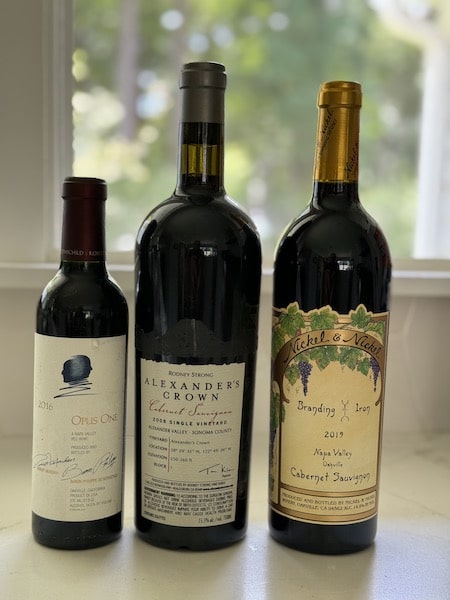
Reputation of the wine
Cabernet Sauvignon is Napa’s signature grape and Napa Valley has a lot of smaller wineries making single vineyard and estate Cabernet. It’s not unusual for these wineries to have quite a cult following, which can give their wines a degree of exclusivity. Some wineries even release and sell wine only to members of their mailing list / wine club.
Wine Fact: While Napa estate made and bottled wines are very expensive, there is some leftover surplus production and this unbottled wine is often sold in bulk and blended with other Cabs to be sold under generic brand names.

Geography and climate in Napa vs Sonoma
Napa and Sonoma County are both northern wine producing regions in California. They run north of San Francisco Bay and are almost parallel to each other. Sonoma is on the coast. Its climate is heavily influenced by the Pacific Ocean, and it’s partly separated from Napa by some low mountains called the Mayacamas. Napa is a valley further east and inland that effectively sits between two mountain ranges.
In this part of California, typical weather includes a heavy fog that rolls in from the ocean, or in Napa, from San Francisco Bay, in the early morning. Both Napa and Sonoma experience fog throughout the year, but the main months are between April and October, which overlaps with the growing season.
The longer the fog lasts into the day, the lower the average daily temperature which affects the varietals wineries want to grow. In Sonoma, it can last into the early afternoon. In Napa, it tends to burn off by mid to late morning, which is why Cabernet does so much better here.
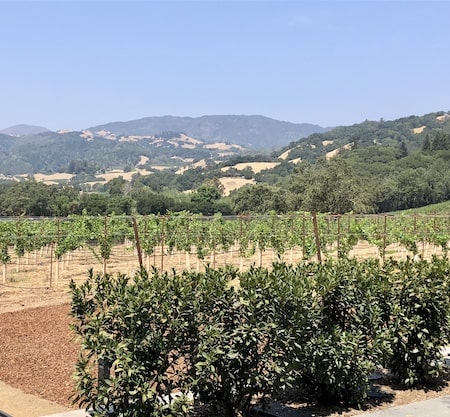
Cabernet Sauvignon
The Cabernet Sauvignon grape itself originated in Bordeaux, France and was brought to California during the California gold rush. It’s a late-ripening grape that likes warmer temperatures and can do well in different soil types. Napa Valley has more diverse soil types than any growing region in the world so it’s no surprise that it thrives here.
Cabernet grapes are a deep ruby red color and tend to be thick skinned, with smaller berries. The color, flavor and aromatics of a wine are partially the result of contact with skins, which explains some of Cabernet’s most famous characteristics. It’s a wine that’s higher in tannins than reds like Merlot and Malbec, and often has notes of red and black fruits, like raspberry, blackberry, black cherry and currants.
Wine Fact: During Prohibition, California shut down 144 wineries in Napa and it wasn’t until the 1950s that the wine industry really started to make a comeback.
Major growing regions of Napa Valley
There are 17 appellations in Napa which are specific growing areas where the terroir is unique and the temperature and local sub-climate are consistent. Napa has vineyards located in the mountains, as well as on the valley floor.
While there can be a difference in the style of the wine depending on the winery, you’ll also note a difference in Cabernet from northern and southern Napa. Wine from the southernmost appellations won’t necessarily be as big in fruit or sugar as wine from the north, and the harvest may have taken place a good 2-3 weeks earlier.
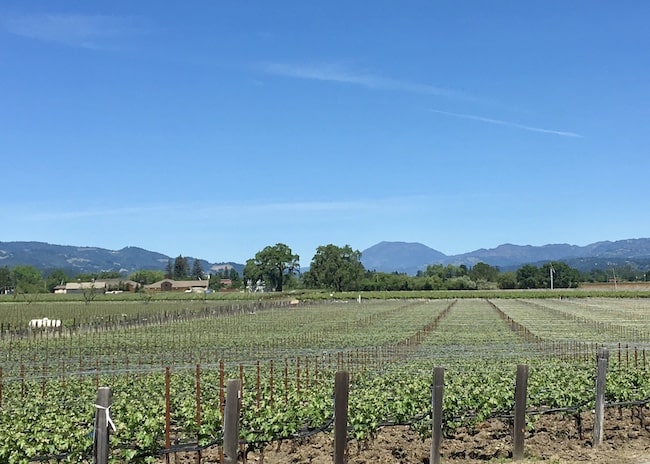
Napa AVAs from north to south
- Calistoga. Calistoga is the warmest and most northern part of Napa. They make red wine here including Cabernet, Zinfandel and Syrah.
- Howell Mountain. This area is hotter and drier than most AVAs. A bottle of red from Howell Mountain is often highly structured and long-lived, meaning it’s best to put it away for a few years before drinking.
- Diamond Mountain. This AVA has volcanic soil that almost looks like it’s full of diamonds, thus the name!
- Spring Mountain District. They make full-bodied wines with luscious fruit here. The backside of this appellation borders Sonoma County.
- Chiles Valley. This area is best known for its Zinfandel.
- St. Helena. St. Helena’s vineyards are located both in the foothills of the mountains and on the valley floor. They make rich and full-bodied Cabernet Sauvignon.
- Rutherford. Rutherford is known for its unique soil which can give the Cabs a hint of what’s known as “Rutherford Dust.”
- Oakville. Some of the most famous wineries and vineyards in Napa are located in Oakville. You’ll find Opus One, Far Niente, Scarecrow and Screaming Eagle here, among others.
- Yountville. This is one of Napa’s cooler districts where there are a lot of small family owned vineyards and farms.
- Stags Leap District. Stags Leap is a small area with hillside and valley vineyards. The wines are big but also uniquely elegant and accessible. There are some famous wineries here like Shafer and Stags Leap Wine Cellars.
- Mount Veeder. In Mount Veeder you find mainly vines growing in the mountains and on hillsides. This is also the largest Napa appellation.
- Atlas Peak. Atlas Peak makes highly tannic wines and the grapes grown here are often blended with fruit from other areas.
- Oak Knoll. There’s a lot of Chardonnay grown here.
- Coombsville. This is where some of the best Chardonnay in Napa Valley comes from.
- Wild Horse & Suisun. These are smaller valleys in a cooler area that are just starting to be planted.
- Carneros. Carneros is split in two. One half is in Napa and one half is in Sonoma County. The region itself is known for making some of the best Chardonnays and Pinot Noirs.
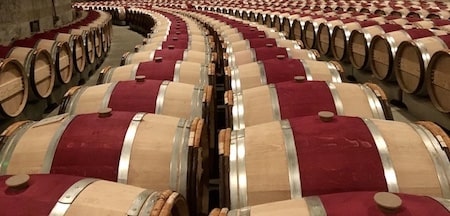
Planning a visit to a winery?
In Napa and Sonoma most of the wineries have wine tasting facilities so you don’t necessarily need to make a reservation before your visit. However, you will typically have to pay to enter a tasting room.
There will be someone in the room pouring and walking you through the wines you’re tasting (which are always available for purchase). You may be able to taste a flight of wines or choose individual bottles you’d like to try.
Remember to use the sheets you’re given to make tasting notes. If you’re planning on bringing any wine home with you, you might want to write down the details they explain about the vintage you’re trying.
If you’re planning to walk around the winery after your tasting, try to avoid putting bottles straight into a hot car. With red wine (whites too) a sudden and big difference in temperature can be quite detrimental, so also be mindful of additional stopovers when your AC will be turned off.


5 Tips if you’re visiting Napa and Sonoma
- Stop in Carneros for a sparkling wine tasting. Carneros is the first area you’ll hit north of San Francisco Bay where you can visit wineries. It’s split between both Napa and Sonoma so it ticks all the boxes. From Gloria Ferrer to Roederer Estate, grapes grown here are used to make some of the best sparkling wines in the country.
- Plan out your visit ahead of time. Many wineries you can just walk into but some of the smaller, big name wineries are by appointment only and reserved for people in the retail or restaurant industry. Check ahead if the winery you’re interested in is open to the public and try not to overschedule yourself. While the distances aren’t great, once you’re on Highway 29 or the Silverado Trail you’ll quickly be climbing winding mountain roads and some small wineries can be challenging to find.
- Look closely at the label of the wine you’re tasting. If the bottle just says Napa Cabernet, it could be a blend of grapes from several growing regions. This is as opposed to an estate where all of the grapes come from one property or vineyard. Winemakers use blends to create a particular style.
- Try a Pinot Noir or Chardonnay when you visit Sonoma. These are the signature grapes of Sonoma and they’re what Sonoma County is best known for. Sonoma also makes some wonderful sparkling wines.
- Pay attention to the price of single vineyard Cabernets. They can be up to $400+ a bottle and while these wines are wonderful if you have that kind of money, there are plenty of great Cabs from the region at much lower price points.
What to taste in Sonoma
Pinot Noir is a medium-bodied red wine with good up-front fruit. They make excellent Pinots in Sonoma County, particularly in the Russian River and Sonoma Coast regions. This is because the grapes need a cool climate in order to develop the right balance of sugars vs acidity.
Chardonnays from Sonoma are famous the world over. They come in different styles and can vary from tropical fruit to expressions of ginger and spices. These are generally big, rich, full-bodied white wines with a good backbone of acidity. Try a Chardonnay from the Chalk Hill region in Russian River and you won’t be disappointed.

